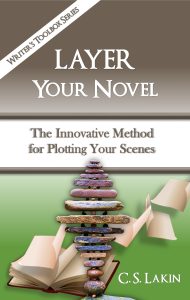Master Your Novel’s 10 Key Scenes
I never planned to write books on novel structure. Nor create online video courses to help teach writers how to craft a solid story.
But after years of blogging on novel writing, producing hundreds of blog posts on the topic, and editing hundreds of manuscripts, I realized writers needed more. Though there were (and are) hundreds of books teaching how to write a novel, I kept wondering why writers were having such a hard time crafting a solid story.
Sometimes too much information is just too much. You know what I mean? There is so much great info on the internet. There are so many terrific online courses and super helpful writing craft books. I hear from writers about their extensive libraries of books designed to teach them how to be great writers.
That’s all good. I have a huge library too, and I buy books all the time. It makes me think of the Scripture in Ecclesiastes: “Of making many books there is no end, and much study is wearisome to the flesh” (12:12 NKJV).
So over the years, I set out to distill things down to the simplest concepts. I found that many writing instructors tossed around ideas about the three-act structure and terms like concept, idea, and premise. Many gave conflicting definitions.
I found myself making charts and simple lists. Since writing is so complex, and novel writing especially, I always searched for ways to make the process as intuitive and streamlined as possible.
That’s what got me started on the ten key scenes. I’d read a lot about the important turning points or beats or plot points in a novel, but, again, I found the terminology conflicting and confusing. Whenever I get confused, I try to find an easy way to explain something. I need that in order to make sense of the process.
 A few years ago I developed The 12 Key Pillars of Novel Construction on this blog. My aim was to focus on those basic components that I often saw lacked developement and understanding in the manuscripts I edited and critiqued. From there I put a book together, and then a workbook. I also created an online mini video course, which nearly 1,000 writers have taken in the last few years.
A few years ago I developed The 12 Key Pillars of Novel Construction on this blog. My aim was to focus on those basic components that I often saw lacked developement and understanding in the manuscripts I edited and critiqued. From there I put a book together, and then a workbook. I also created an online mini video course, which nearly 1,000 writers have taken in the last few years.
I’ve gotten a lot of feedback on my books, blog posts, and online courses. And what’s been so encouraging and uplifting to me is to hear how so many writers have found these tools useful. Not just useful but giving them what they’ve needed and haven’t been able to find anywhere else.
Okay, maybe it’s all my handy charts. Or my fun slides and movie clips. I don’t know exactly, but I’m glad so many writers have felt all this instruction is helping them write the books they’ve dreamed of writing. I’m thrilled and humbled that I’ve been able to help hundreds of writers get excited about writing. I’ve even had writers tell me my books have completely changed their life, even going so far as to say my teachings have raised them out of the pit of despair and hopelessness and misery to finding joy and fulfillment in their writing and, subsequently, their life.
Yes, it’s humbling to hear that kind of praise. I don’t take credit for any of it. Whatever gifts and wisdom I’ve been given are gifts from above. I’m just trying to be a faithful steward of what I’ve been blessed with.
So … what am I going on about?
I’ve heard from hundreds of writers about Layer Your Novel and my online video course The 10 Key Scenes That Frame Up Your Novel. More than any other book or course I’ve written, these have gotten so much positive feedback. I can’t count how many writers have said the content has made it so clear how to structure their novel and they are grateful for the information.
The material in my book and my course isn’t anything new. It’s all gleaned from the wisdom of many writing coaches and authors. I have my way of presenting the material, with a dash of my own methods and opinions. I share what’s worked for me in writing more than twenty novels. I’ve learned a lot over three decades of writing and publishing. And I love helping writers get to the point where they feel confident that they “get” novel structure.
It is something you have to “get.” It takes work, learning, practice, study.
I’d like to encourage you—if you are mystified about novel structure—to get my book and take my course. It won’t put much of a dent in your wallet. Rather than spend thousands of dollars getting your manuscript edited, only to possibly find out your story completely fails to hold up structurally, why not spend a few bucks and dive into novel structure?
I truly believe you’ll be glad you did.
If you haven’t taken the time to master scene structure, you’d best slow down and spend some time focusing on that. It’s not a good idea—in fact, it’s a terrible idea—to try to write a novel, or even plot one out, if you don’t have scene structure under your belt.
I have plenty of book chapters and blog posts on scene structure. And those charts. Be sure to download my 8 Steps to a Perfect Scene chart as well as my Scene Structure Checklist chart. Those will help. But they’re just aids. You need to take the time to both study and put into practice what you learn about scene structure.
Get Layer Your Novel here on Amazon (print or ebook). And sign up for my online course here. I offer a 30-day money-back guarantee on all my courses, so you aren’t risking a thing. If you don’t like the course, ask for a refund.

I present three specific methods in this book for layering that novelists might chose to use. I use all three (not for each book—I only use one per book). One method focuses on layering in a subplot. Another method centers on the more common “action-reaction” method found in all novels, and the third method is specific to romance structure.
While there could possibly be endless methods or variations of these methods, I feel these three cover the basics for most genres. And by deconstructing a handful of novels, to show you how great novels are structured on a framework of those ten key scenes (for the most part), I’m hoping you’ll see how your novel can and should be structured.
If you are serious about success, you need all the help you can get. You need to filter out all the noise and distractions and spend your time wisely, focusing on what will truly help you reach your goals.
I hope this layering method will aid you in structuring a solid story. I believe it will. And if you’ve found it useful, share in the comments!











